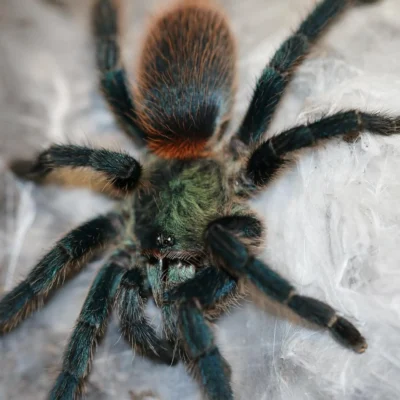Buy subadult tarantula online
Subadult tarantulas are in a critical transitional phase—past the juvenile stage but not yet sexually mature. They’re ideal for collectors, breeders, and educators who want visible coloration, stable behavior, and predictable molting cycles. Here’s a full breakdown tailored to your level:
Buy subadult tarantula online
🕷️ Subadult Tarantula Profile
| Attribute | Details |
|---|---|
| Instar Stage | Typically 5th–8th instar (species-dependent) |
| Size Range | ~5–12 cm (2–5 inches) leg span |
| Sexual Maturity | 1–2 molts away from adulthood |
| Behavior | More stable, less skittish, feeding regularly |
| Molting Frequency | Slows down compared to juveniles; ~every 3–6 months |
Subadults have adult-like coloration and proportions, but lack mature sexual organs (e.g. spermathecae in females, pedipalp bulbs in males).
🧬 Species Examples at Subadult Stage
- Brachypelma hamorii (Mexican Red Knee)
- Subadults show vibrant orange patella bands
- Docile, ideal for display and handling
- Slow-growing, long-lived
- Grammostola pulchripes (Chaco Golden Knee)
- Subadults exhibit golden leg striping and a calm temperament
- Terrestrial burrowers are great for beginners
- Poecilotheria subfusca (Ivory Ornamental)
- Arboreal, fast-moving, and visually striking
- Subadults show full patterning but are not yet sexually dimorphic
- Pamphobeteus sp. (e.g., Crimson Mask)
- Subadults display iridescent coloration and a bold feeding response
- Popular in exotic morph trade
🏡 Enclosure Setup
- Tank Size: 5–10 gallons per subadult
- Substrate: 3–5 inches of coco fiber, peat moss, or topsoil
- Temps: 72–82°F (22–28°C)
- Humidity: 60–80%, species-dependent
- Hides: Cork bark, half logs, burrowable zones
- Lighting: Ambient only—avoid direct light
Subadults are burrowers or climbers, depending on genus—naturalistic setups reduce stress and improve feeding.
🍽️ Diet & Feeding
- Feeding Frequency: Every 5–7 days
- Prey Items:
- Adult crickets, dubia roaches, and mealworms
- Prey size should match body length
- Feeding Tips:
- Remove uneaten prey within 24 hours
- Mist lightly to aid hydration
Subadults show a strong feeding response and begin developing hunting routines.
🧠 Behavior & Temperament
- Nocturnal: Most active at night
- Defensive or docile: Depends on genus
- Handling: Not recommended—use soft brush or catch cup
- Molting Signs: Fasting, darkening, lethargy, web mat construction
They’re ideal for observation, photography, and behavioral studies.






Reviews
Clear filtersThere are no reviews yet.